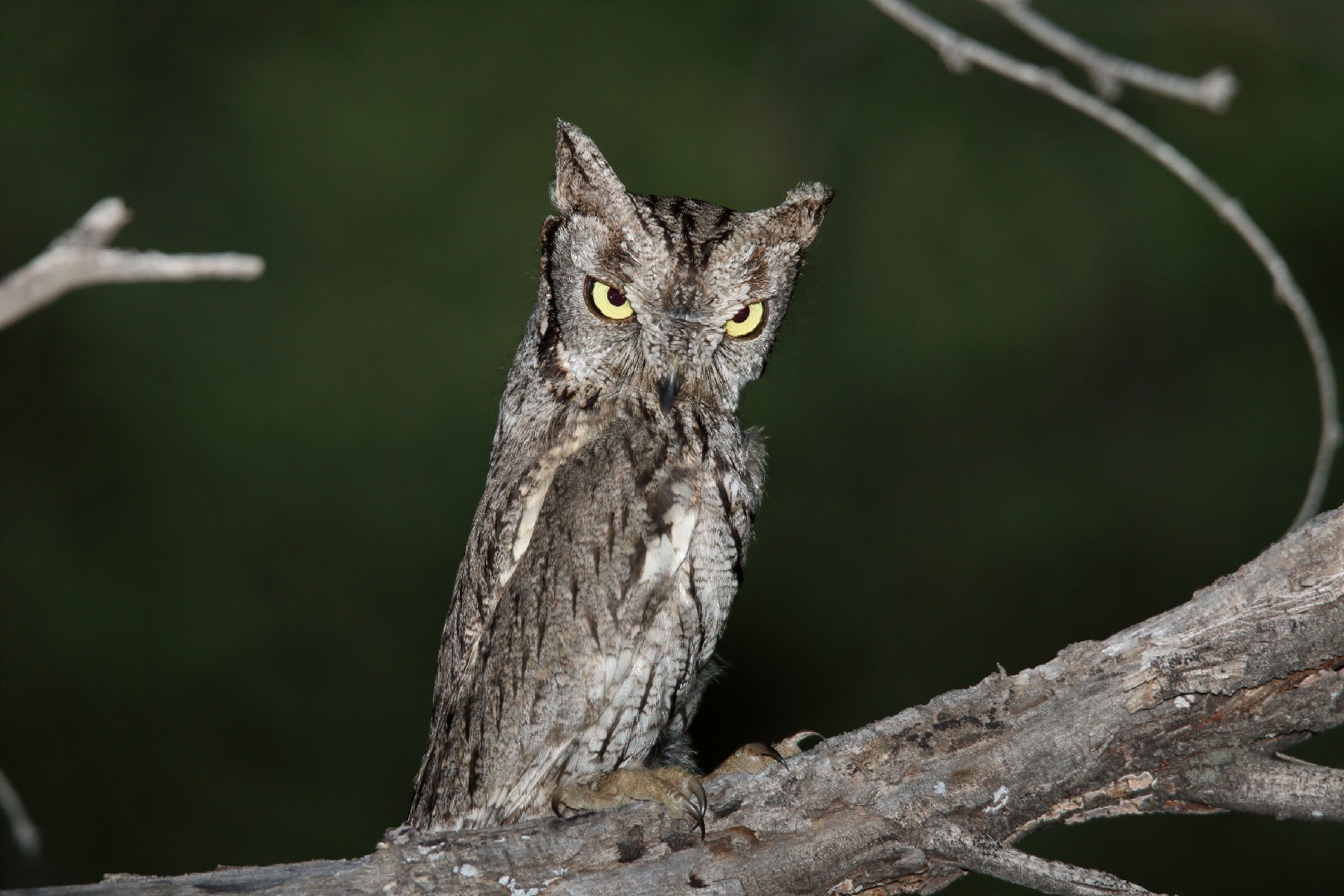Western Screech-owl
A species of Screech owls Scientific name : Megascops kennicottii Genus : Screech owls
Western Screech-owl, A species of Screech owls
Botanical name: Megascops kennicottii
Genus: Screech owls
Content
Description People often ask General Info
 Photo By Dominic Sherony , used under CC-BY-SA-2.0 /Cropped and compressed from original
Photo By Dominic Sherony , used under CC-BY-SA-2.0 /Cropped and compressed from original Description
The western Screech-owl can be found in deciduous and mixed forests and is relatively common to come across in its natural range. These owls used to be considered the same as Eastern screech-owls (Megascops asio) but have their own distinct call. The western Screech-owl is nocturnal and hunts for small to medium-sized fish, mammals, and insects.
Size
18 - 25 cm
Life Expectancy
13 years
Nest Placement
Cavity
Clutch Size
2 - 7 eggs
Number of Broods
26 - 34 days
Feeding Habits
Western Screech-owl primarily consume small mammals, including several species of mice, shrews, bats, and occasionally rabbits. Their diet also features birds, fish, amphibians, and various invertebrates such as insects, crayfish, and snails. These owls employ a sit-and-wait predatory strategy, often catching prey from perches or in midair flight. Dietary preferences vary by location and season.
Habitat
Western Screech-owl predominantly inhabits forested regions, including both temperate and tropical montane forests. They exhibit a preference for areas with a mix of deciduous trees such as cottonwood, aspen, alder, water birch, oak, and bigleaf maple, often found along canyons and watercourses. Additionally, western Screech-owl is adaptable to various environments, ranging from shrublands and deserts to rural and suburban landscapes, with a presence in parks and gardens. They thrive at altitudes up to 6,000 feet and have been documented across a broad geographical range from Canada to Central America.
Nest Behavior
Male western Screech-owl selects and presents the nest site to the female, using calls or prey as lures. Eggs are laid on existing cavity material, without nest construction. Nesting sites may be reused for consecutive years, with egg-laying and parental care following site selection.
Nest Characteristics
Western Screech-owl typically nests in tree cavities, including those excavated by woodpeckers or naturally occurring. They may also occupy cavities in cliffs, banks, or nest boxes. Nest cavities are about 1 foot in diameter and 1 to 1.5 feet deep with entrances sized to deter predators.
Dite type
Carnivorous
General Info
Feeding Habits
Bird food type
Bird Feeder Type

Platform
Sounds
Song
Recording location: United States
Behavior
Western Screech-owl exhibit primarily nocturnal activity; initiating their foraging at sunset and concluding just before sunrise, often seen basking at their roosts on sunny winter days. Pairs are 'socially monogamous', engaging in mutual preening, duets during courtship, and food exchanges by males to females. Breeding season finds the male roosting proximate to the nest, with pairs sometimes roosting in contact during the late nesting period. Both sexes fiercely guard against predators, while the male predominantly feeds the family. The female is the primary caregiver early on, but joins in hunting as the owlets age. Young leave the nest prior to developing full flight capabilities and remain dependent on their parents for about five weeks thereafter.
Species Status
Not globally threatened.
Scientific Classification
Phylum
Chordates Class
Birds Order
Owls Family
True owls Genus
Screech owls Species
Western Screech-owl